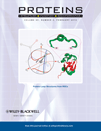Predicting nucleic acid binding interfaces from structural models of proteins
Abstract
The function of DNA- and RNA-binding proteins can be inferred from the characterization and accurate prediction of their binding interfaces. However, the main pitfall of various structure-based methods for predicting nucleic acid binding function is that they are all limited to a relatively small number of proteins for which high-resolution three-dimensional structures are available. In this study, we developed a pipeline for extracting functional electrostatic patches from surfaces of protein structural models, obtained using the I-TASSER protein structure predictor. The largest positive patches are extracted from the protein surface using the patchfinder algorithm. We show that functional electrostatic patches extracted from an ensemble of structural models highly overlap the patches extracted from high-resolution structures. Furthermore, by testing our pipeline on a set of 55 known nucleic acid binding proteins for which I-TASSER produces high-quality models, we show that the method accurately identifies the nucleic acids binding interface on structural models of proteins. Employing a combined patch approach we show that patches extracted from an ensemble of models better predicts the real nucleic acid binding interfaces compared with patches extracted from independent models. Overall, these results suggest that combining information from a collection of low-resolution structural models could be a valuable approach for functional annotation. We suggest that our method will be further applicable for predicting other functional surfaces of proteins with unknown structure. Proteins 2012. © 2011 Wiley Periodicals, Inc.




